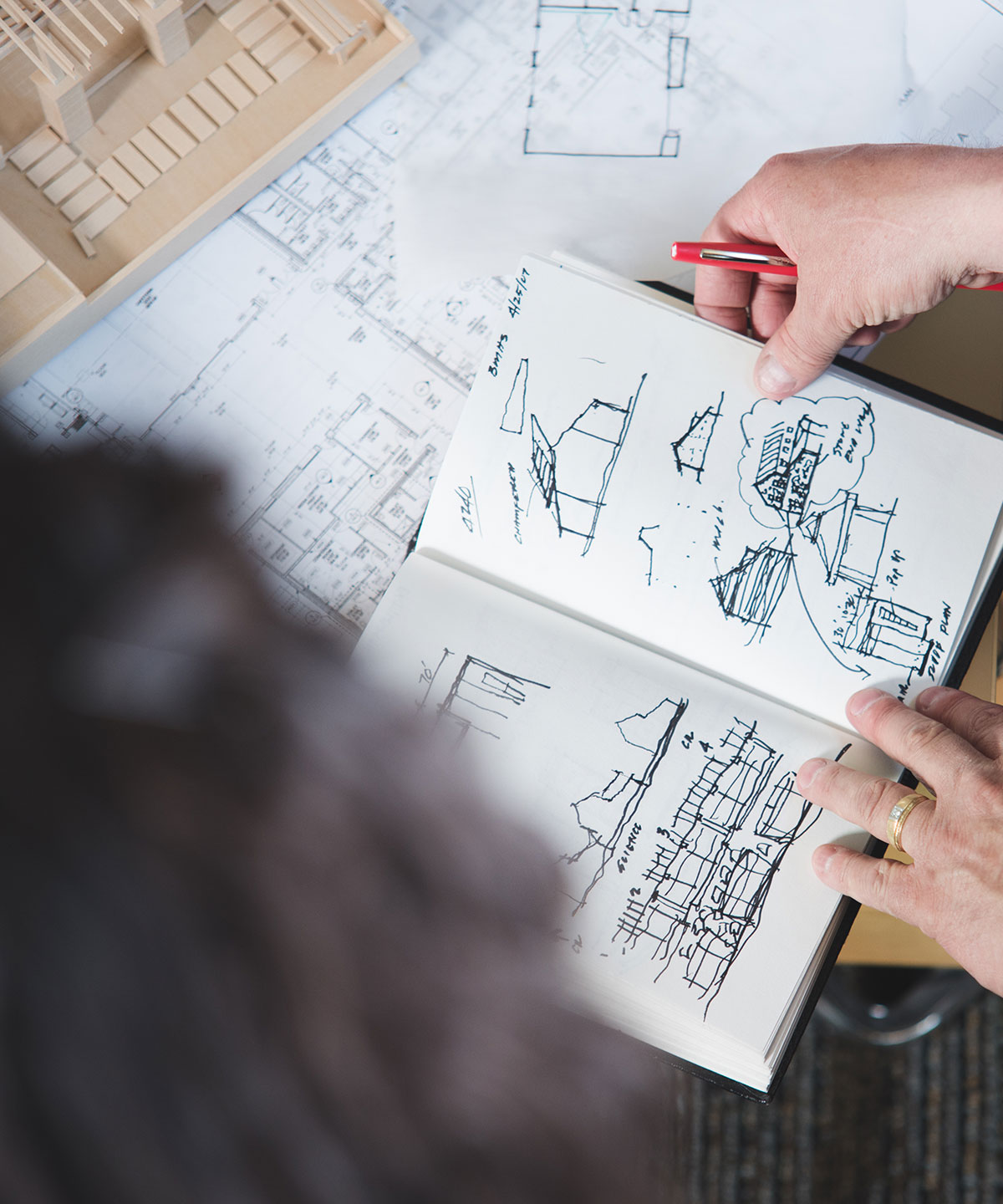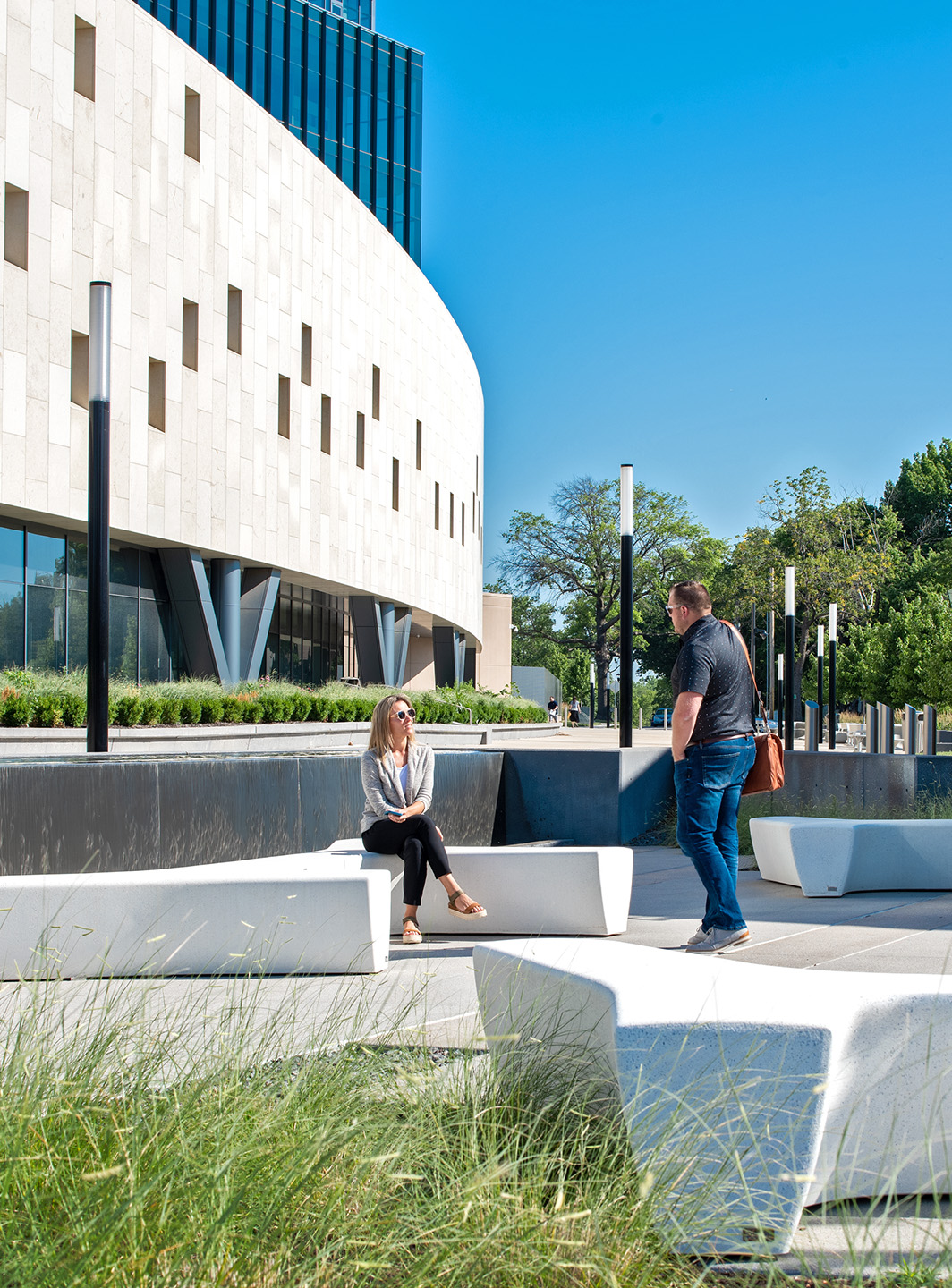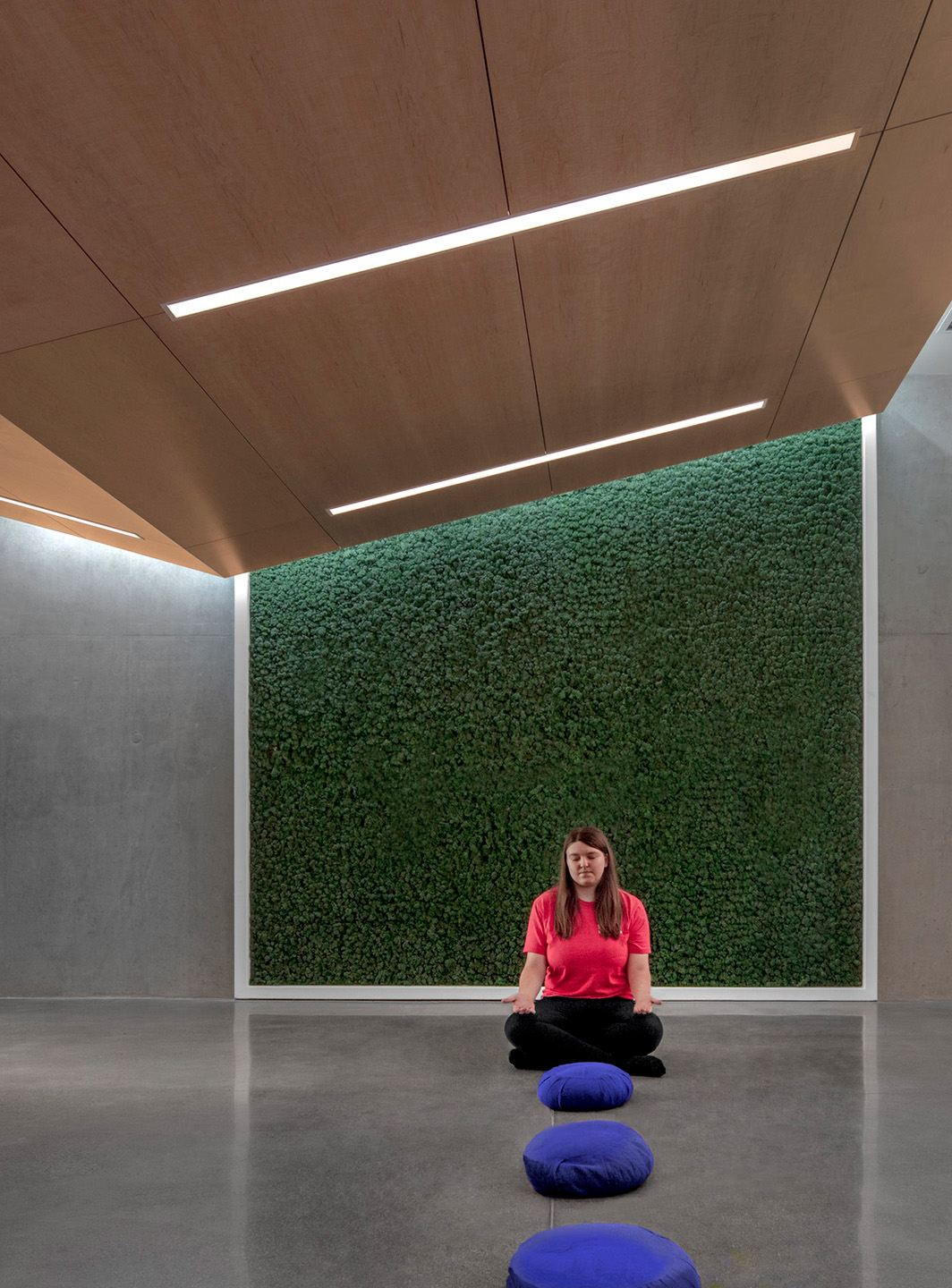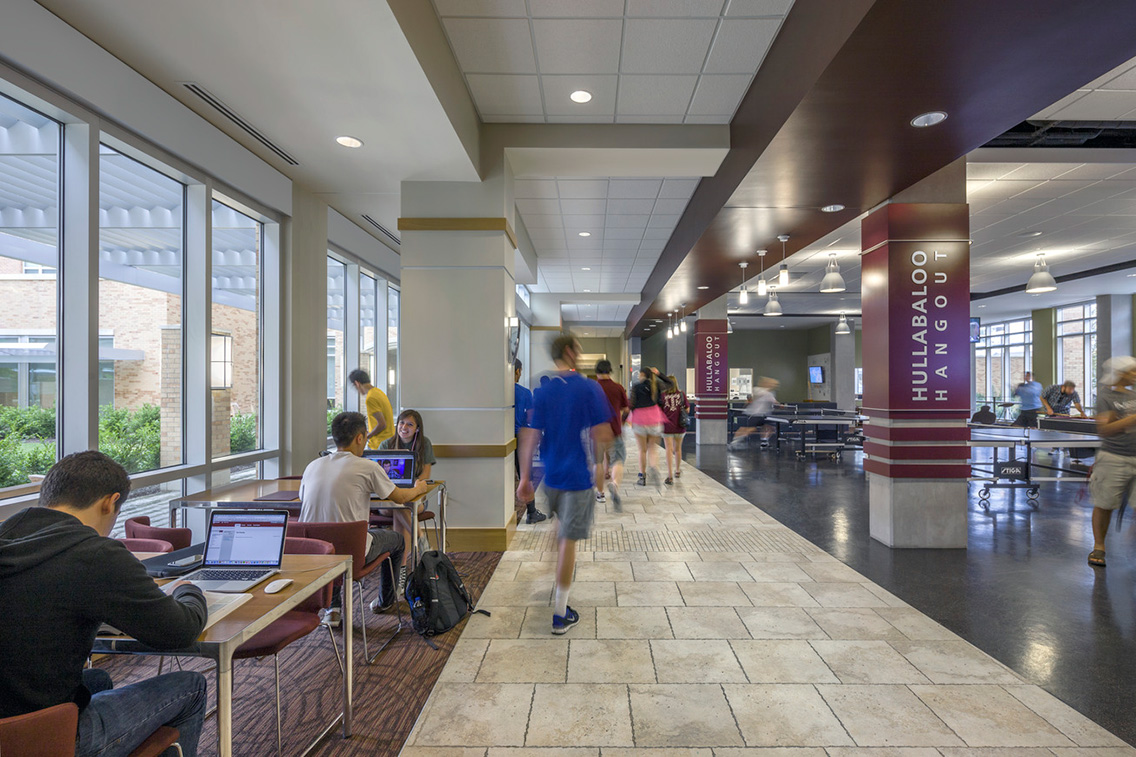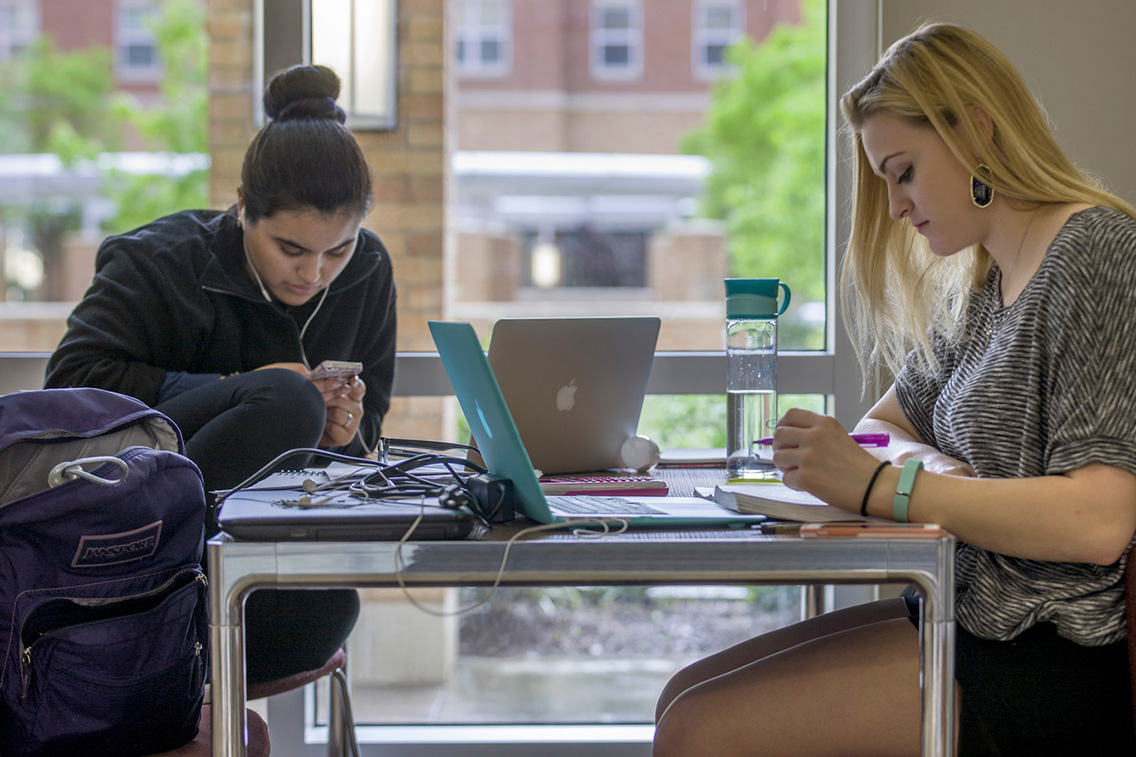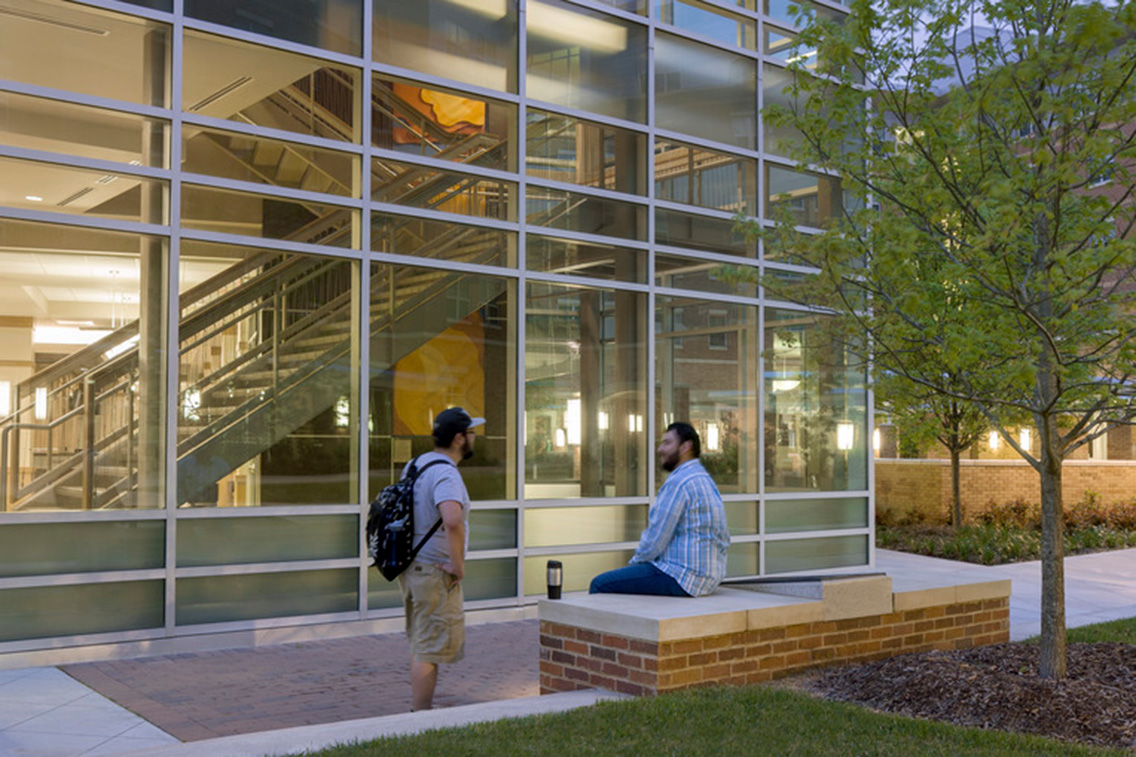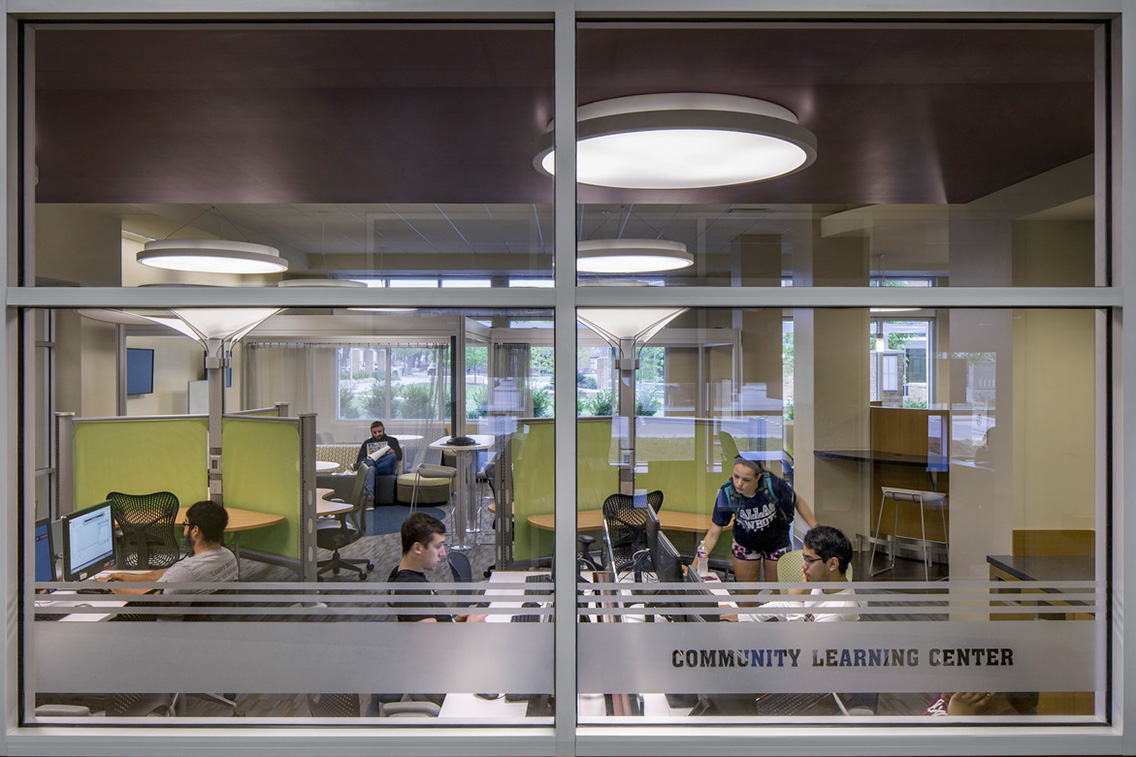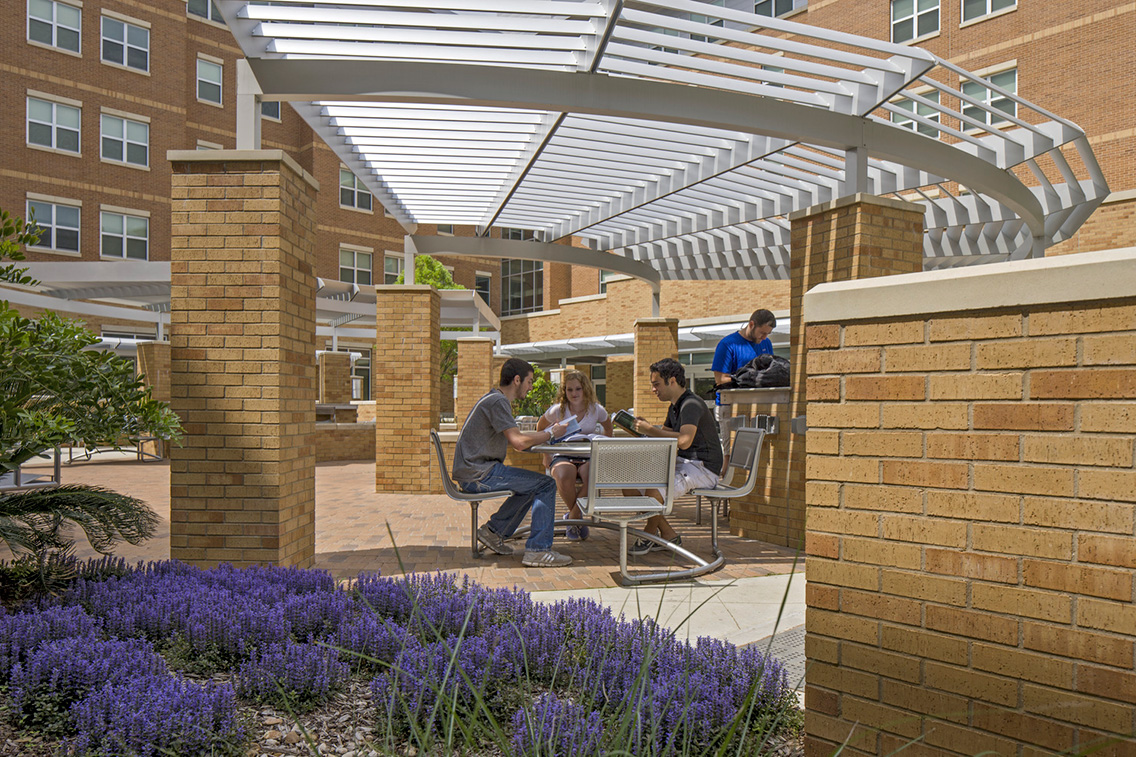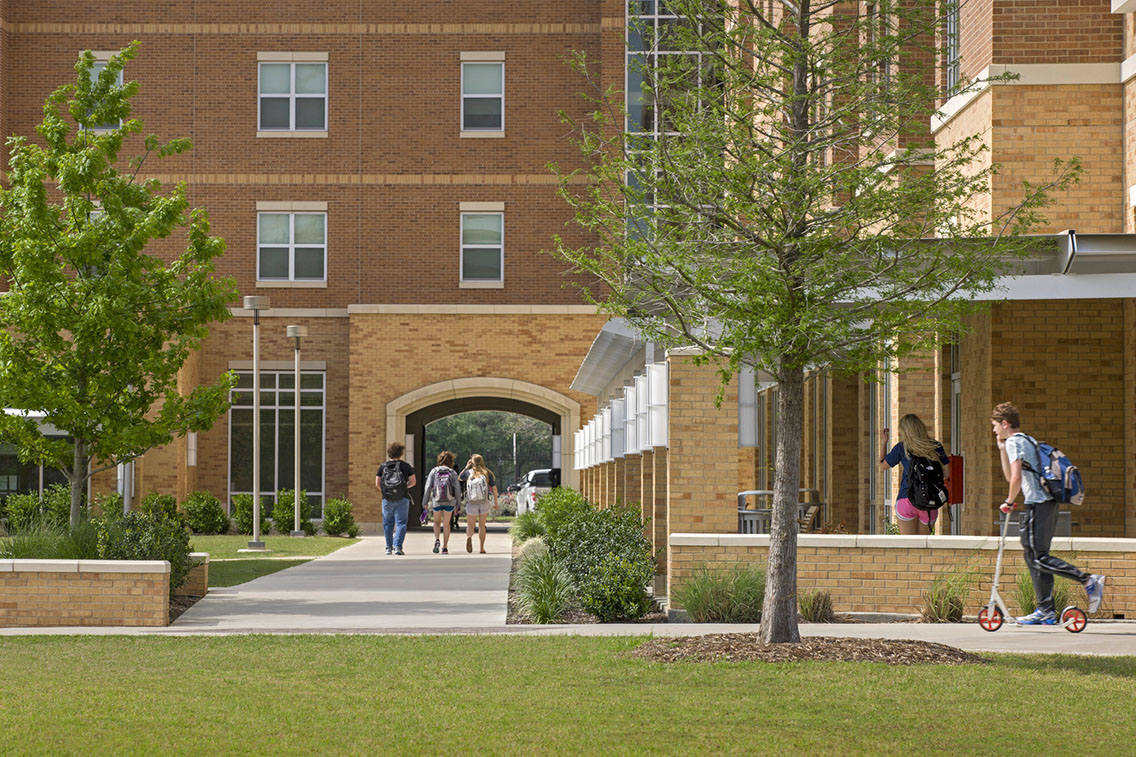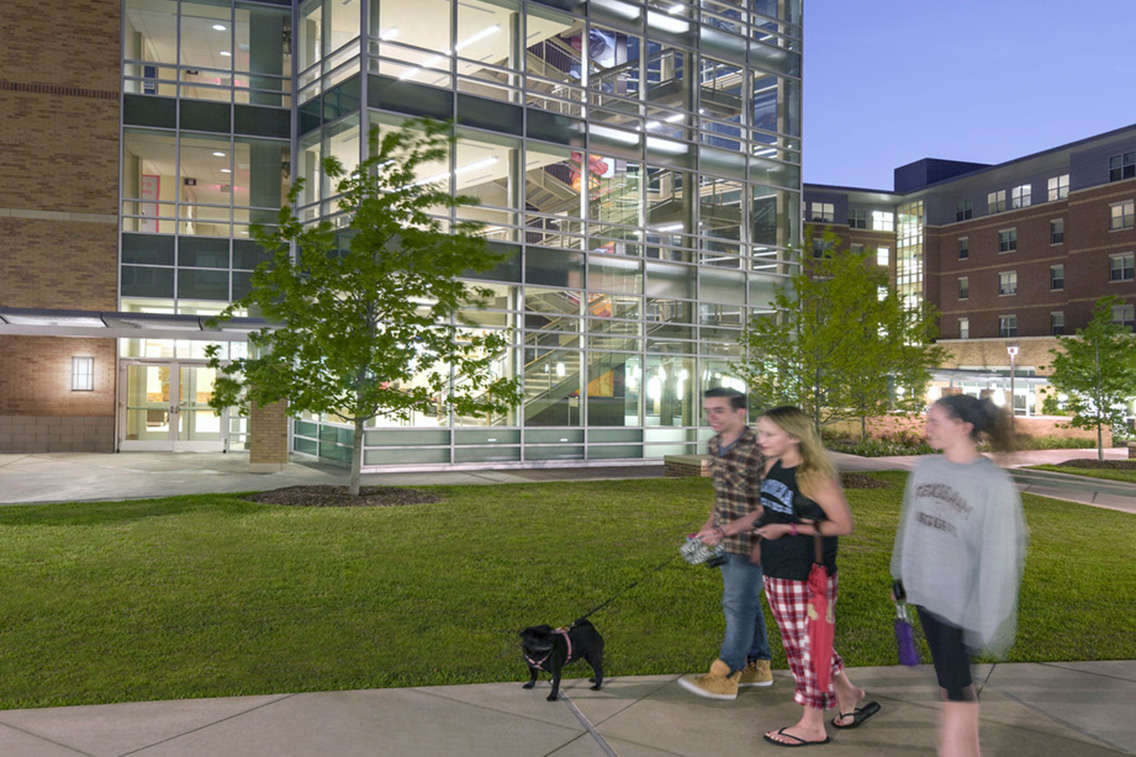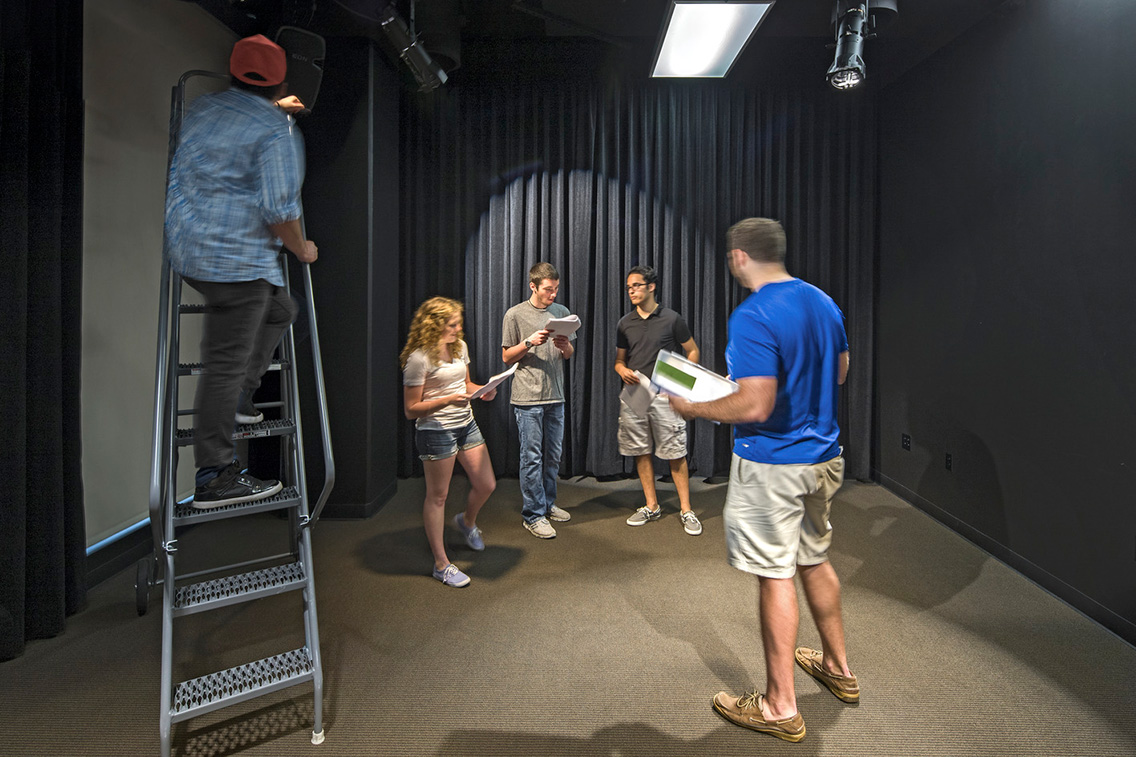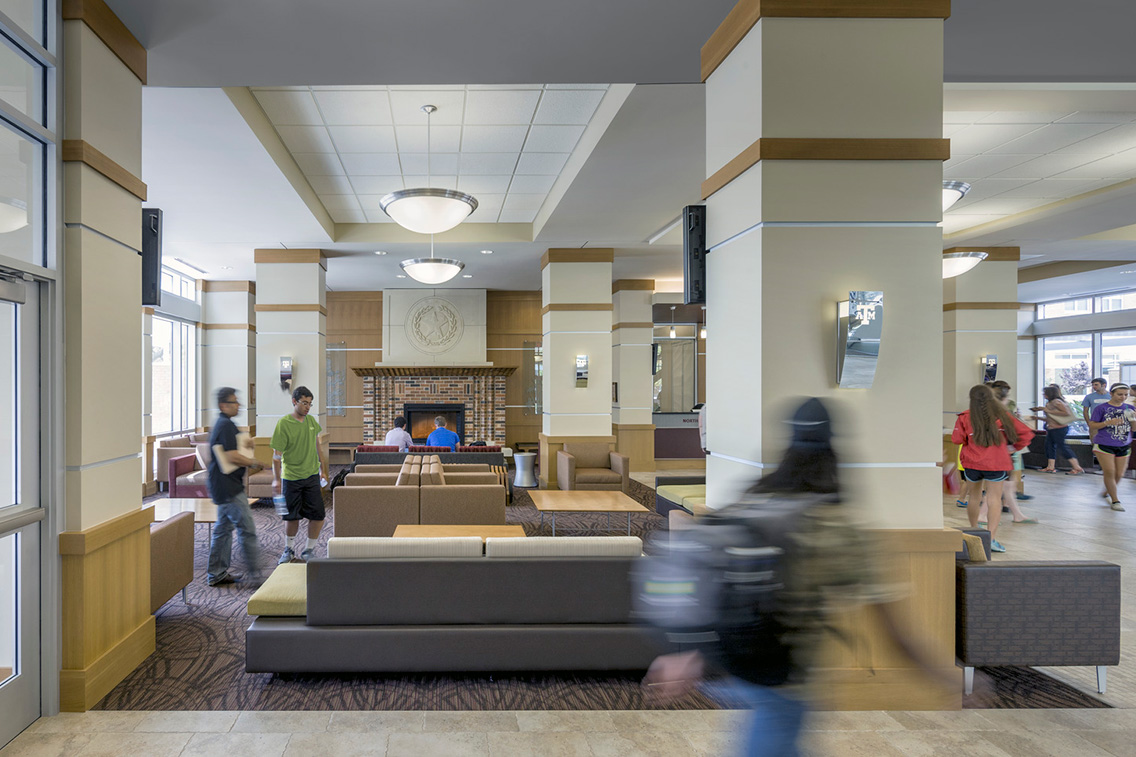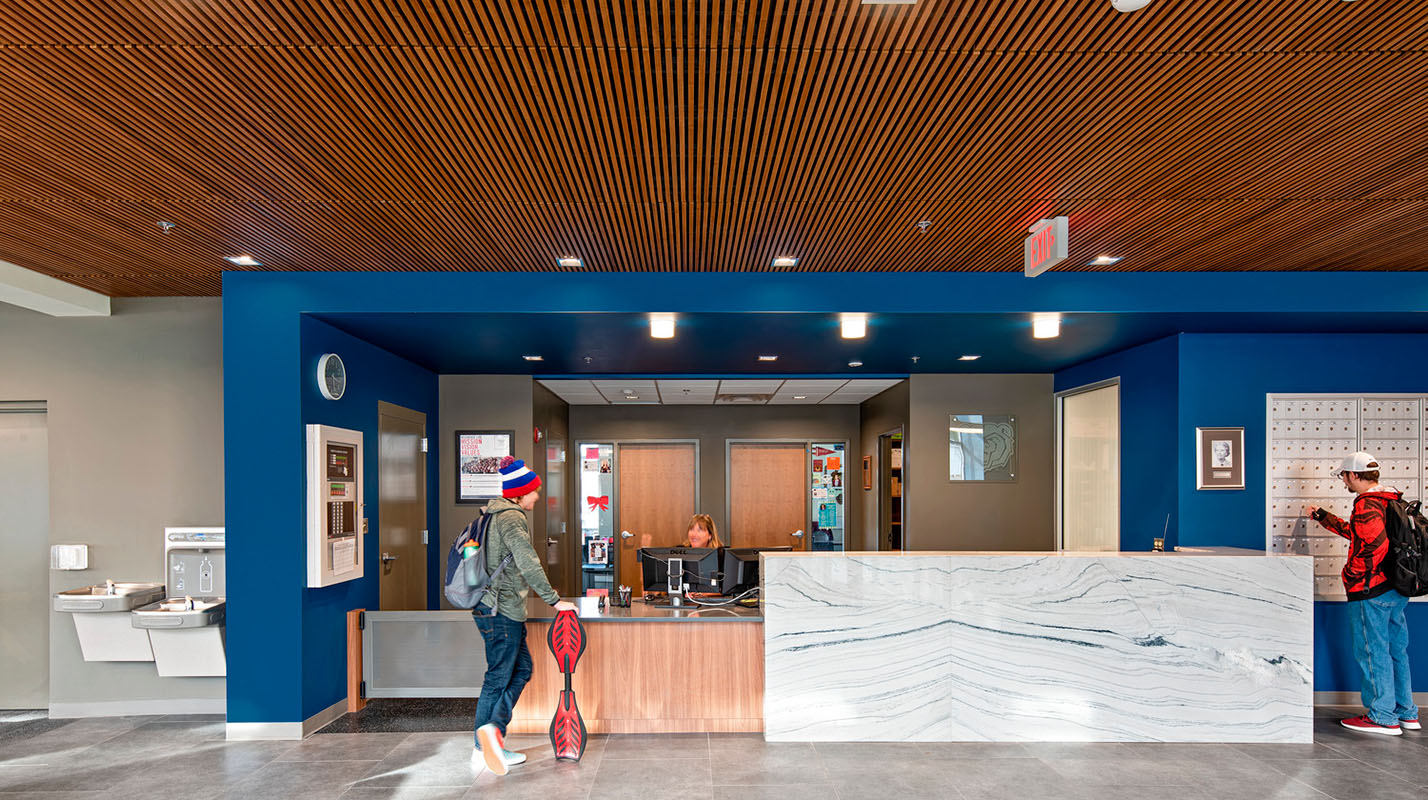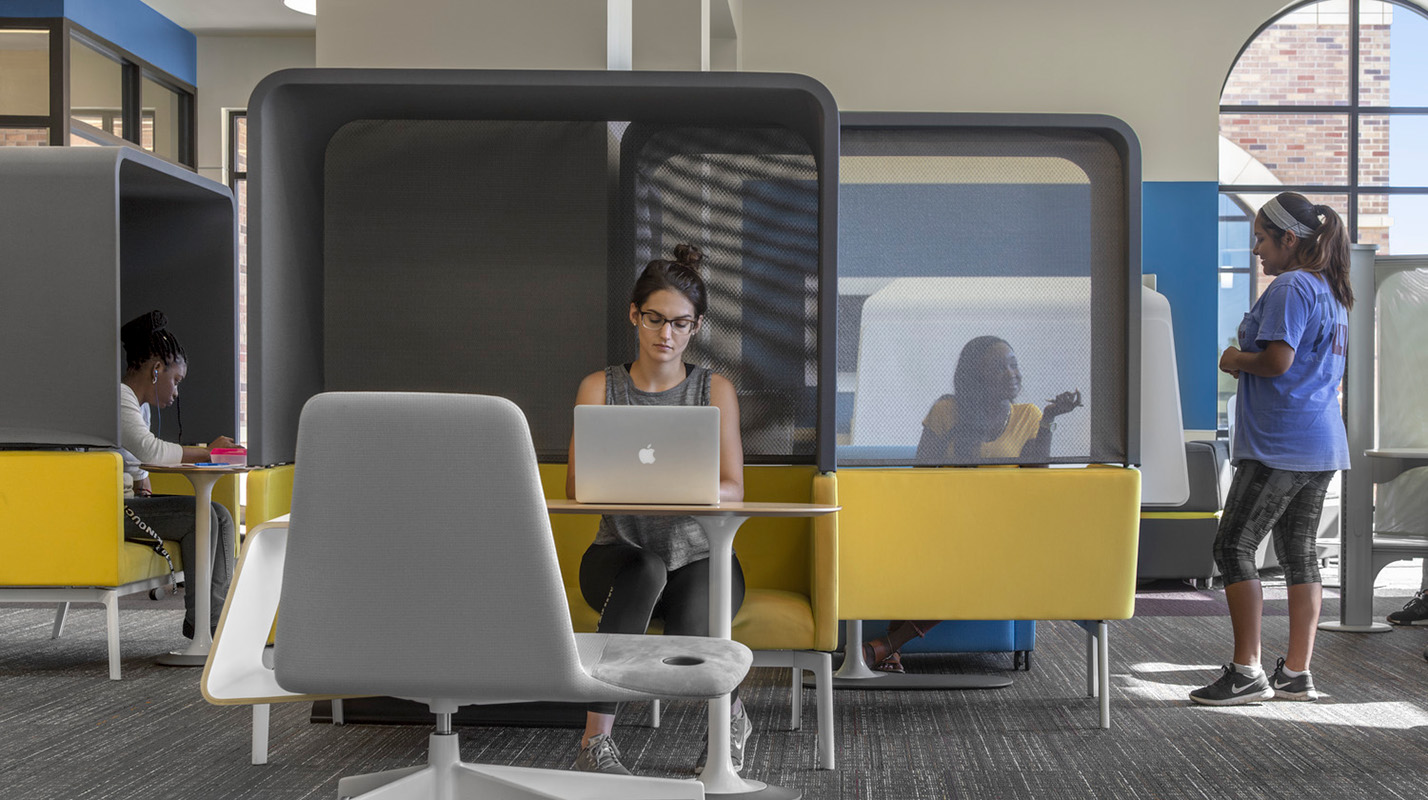How data drives higher education living-learning design
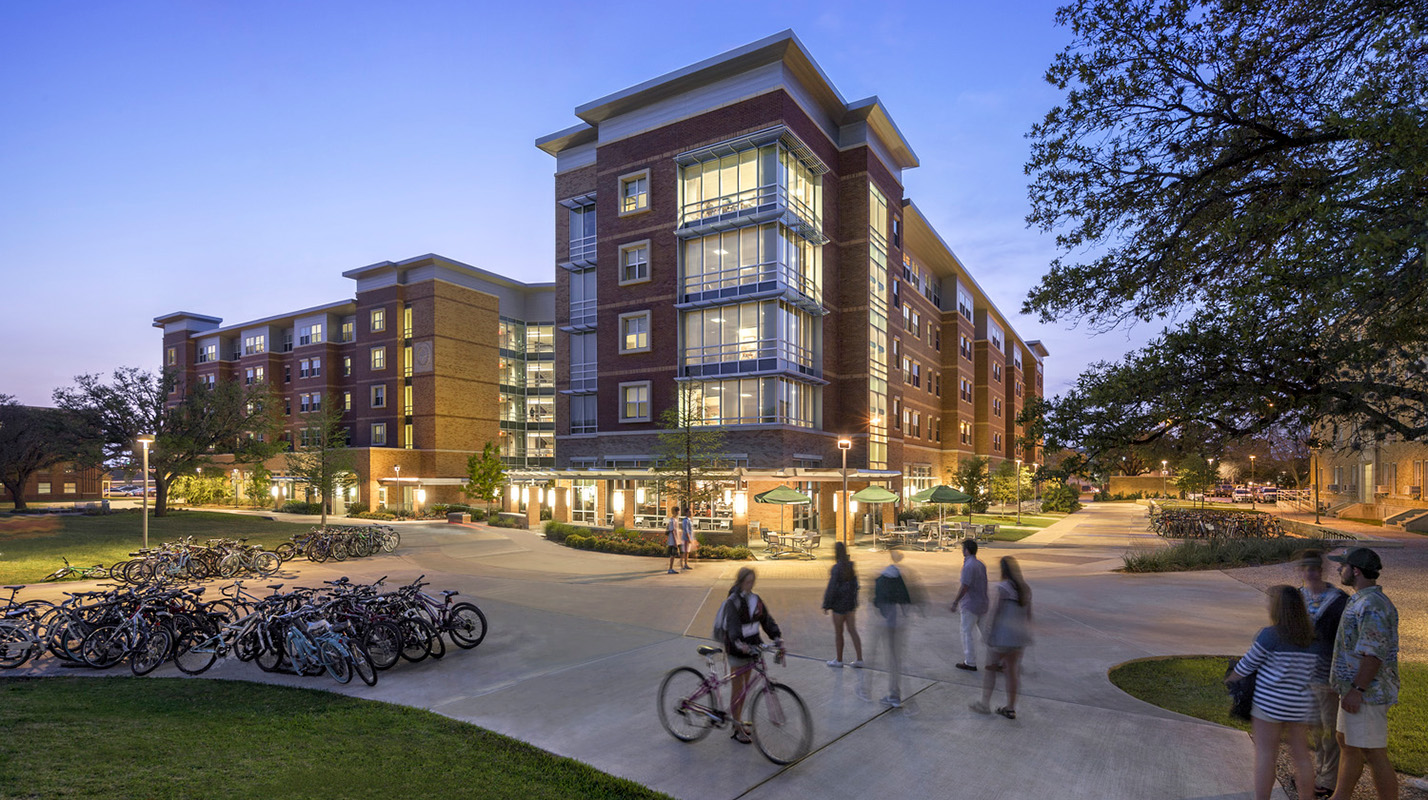
Developing a research tool to uncover what makes a successful living-learning experience
The holy grail of campus housing is to offer residences that students want to live in, that feel like home, and that enhance academic, emotional, and social development. On a practical level, those goals must always be balanced with sustainability, operational efficiency, maintenance realities, and budgets.
One approach has been to incorporate learning centers within student living environments. It’s a trend that results in innovative designs, but poses challenges allocating limited resources and making decisions that will accomplish multi-faceted goals for the facility.
This research study builds upon the traditional post-occupancy evaluation (POE) to offer comprehensive and actionable tools and data for understanding what students need from these facilities.
When the objective is to create community and belonging, a well-crafted POE can help determine whether you’ve hit your goal. It can also answer important questions about process, such as design strategies, collaboration, and constructive feedback.
Building the tools for evaluation
Through a first-of-its-kind post-occupancy research case study on the 648-bed Hullabaloo Living Learning Center at Texas A&M University, we set out to determine just how well the building was performing for its students. The 253,452-square-foot, academically focused hall was the first of several student residences planned to revitalize the north side of the College Station campus.
While many colleges and universities survey students to assess satisfaction with new residences, obtaining useful results with lasting impacts beyond a single building requires multifaceted, repeatable, and thorough data collection.
“We knew that we needed qualitative and quantitative data, with input from many people.”
Chareny Rydl, Director of Residence Life and Housing, Texas A&M University
We wanted to measure how the finished building aligns with pre-design goals, how satisfied students are with the living-learning experience, which program and design choices were the most successful, and which might be improved upon.
The year-long study, which was awarded a Certificate of Research Excellence from the Environmental Design Research Association, was developed jointly between Treanor, Texas A&M University, and the University of Kansas, and approved by Texas A&M’s Institutional Review Board.
We designed a mixed-method data collection process that included an online survey to measure residents’ satisfaction, face-to-face individual interviews with resident assistants and students, ethnographic observation by researchers for seven days, and focus group interviews with the campus stakeholder groups involved in project planning and programming.
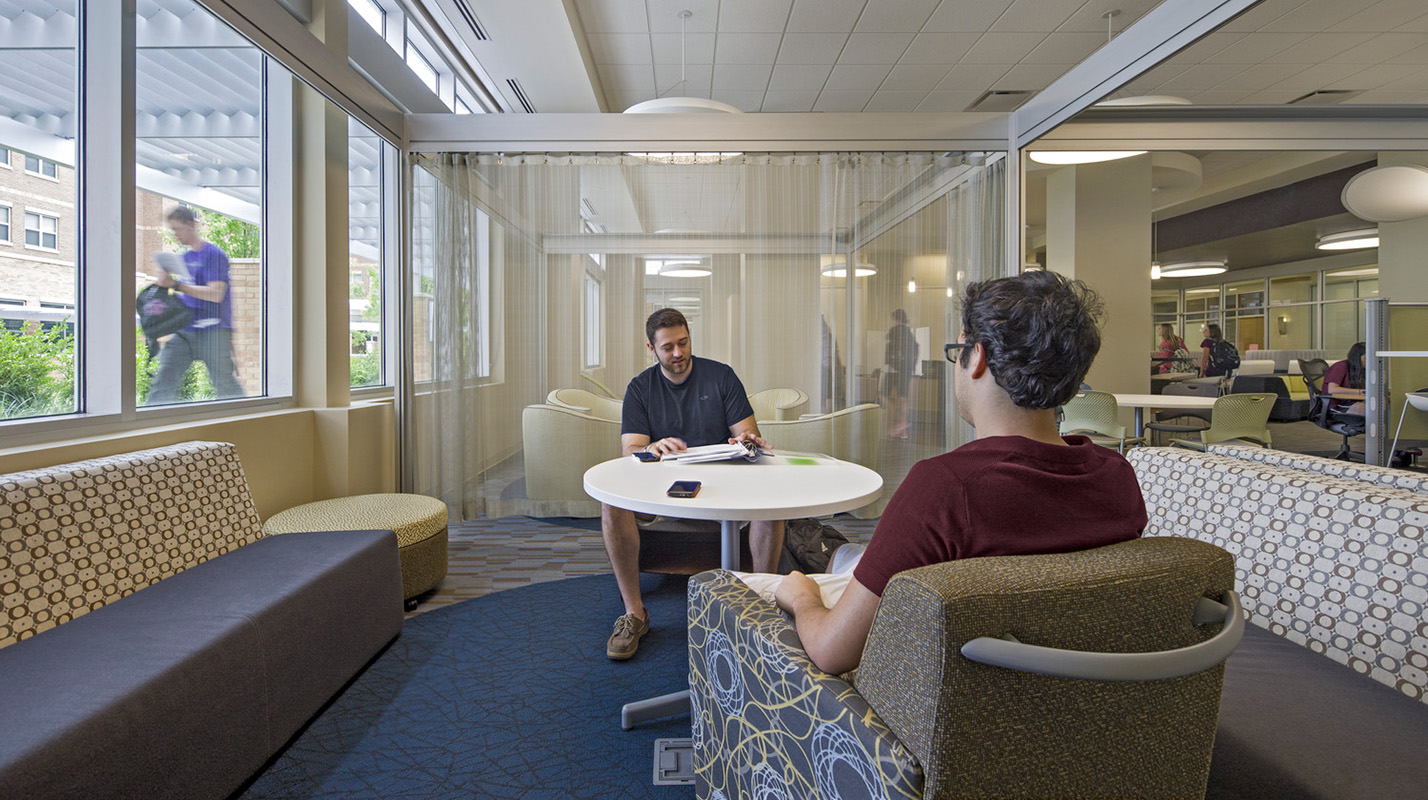
With Hullabaloo, Texas A&M aimed to create a modern living-learning community that integrated the school’s history and traditions. The building was also intended to serve as a destination “living room” for the north side of the campus, according to Daniel Mizer, Jr., the senior associate director of residence life and housing.
To ground that vision in reality, a collaborative design process involved students and 11 campus departments in interactive charrettes. Informed by these brainstorming sessions and research in education, psychology and design, the building design included:
- A mixed-use model with first-floor amenities accessible to all students and upper-levels reserved for residents.
- An organizing structure of 42-person communities sharing a common lounge, kitchen, and study rooms.
- Hybrid living space design that incorporated four unit types: two single semi-suite, one single semi-suite, two double semi-suite, and one double semi-suite. Individual living space was kept small to foster student involvement.
- A mid-rise design to encourage community traffic and interaction patterns.
- A community learning center (CLC) and flexible spaces for formal study, academic support and informal learning.
- Small niches that balance incidental social opportunities with personal space.
- Adaptable furnishings, white boards, and bulletin boards that students can customize.
- Indoor and outdoor elements, such as fireplaces, benches and tables, that incorporate salvaged bricks and oak trees from previous residence halls.
Its ground floor, open to the entire campus, contains mixed-use common spaces, including a community learning center, game room, media room, convenience store, coffee shop, music practice room, tutoring areas, and classrooms. The upper four levels are restricted to residents.
Observing a thriving community learning center at Texas A&M University
Once opened, Hullabaloo quickly became the most popular place to live and hang out on campus, drawing 1,700 applications for 648 beds. Conducting comprehensive post-occupancy research provided hard data about what was drawing students and how they were using (and not using) the space.
“When you spend that much money and charge that much money, you want to have the data to back up your decision-making. This research informs our design choices with validity and in some cases, confirmed anecdotal usage patterns.”
Chareny Rydl, Director of Residence Life and Housing, Texas A&M University
Digging into the key findings
Nearly all residents reported that the building’s living-learning features help them to be more successful socially and academically. They favor the 10-foot ceilings, open spaces, daylight, outdoor space, and small nooks for studying or relaxing. A majority of residents consider the hall to be “world-class” housing.
Students appreciate the diversity of suite-style living spaces, the availability of single rooms and the home-like nature of the upper-level, open-plan lounges that combine kitchen, dining, and living areas for socializing and cooking.
The mixed-use model with its variety of social and academic spaces invites more student usage, improves social interaction and community, and increases student satisfaction.
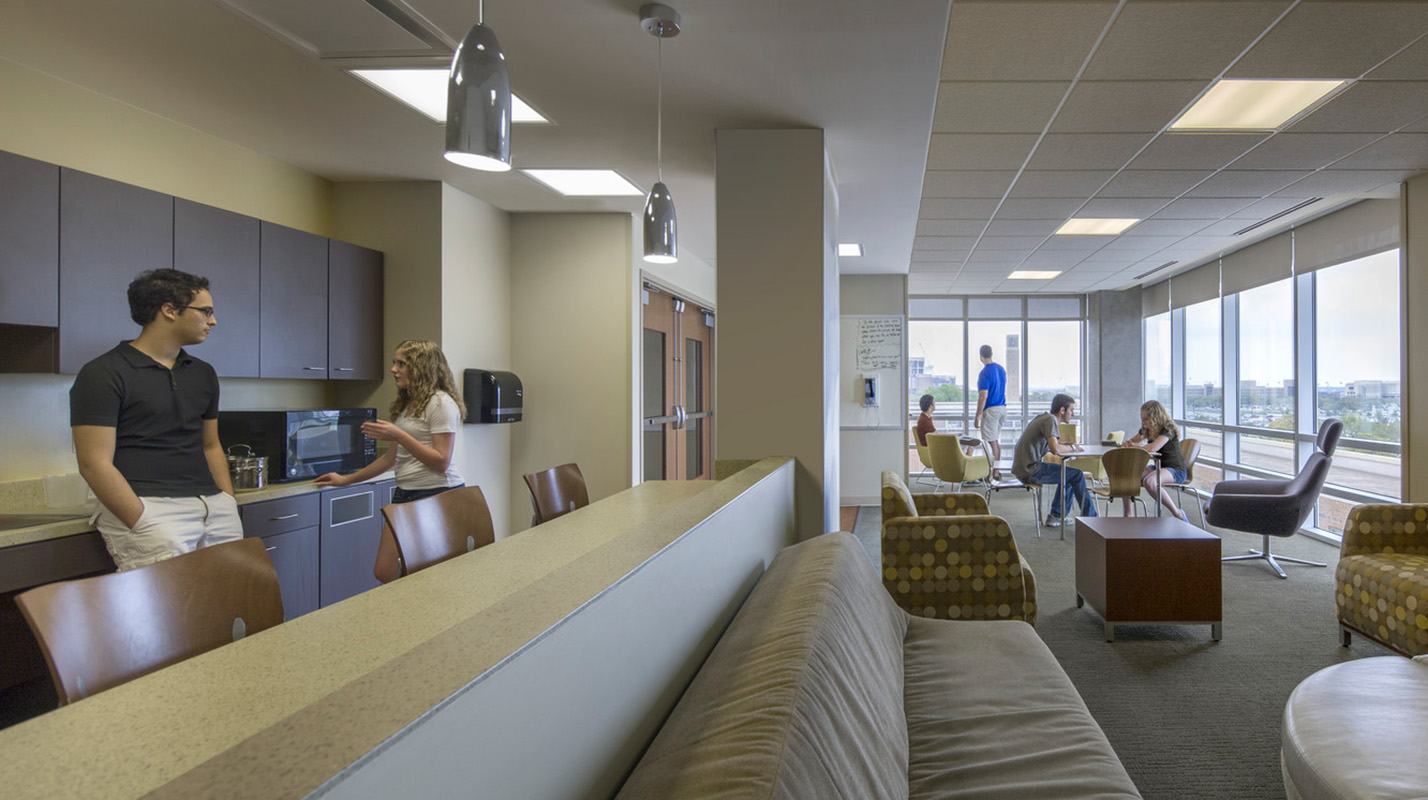
More than 60% of residents regularly invite non-residents in to socialize or study.
The Community Learning Center (CLC) with its advanced computer lab and multiple collaborative study rooms supports students’ academic success. 10% of CLC users live off campus.
Food and dining are critical elements. Upper-level lounge kitchens and the ground-level Starbucks are top features for residents and visitors alike. Students across campus come to the hall to use its kitchens.
Outside spaces are as important as interiors. Students appreciate the landscaping, recycling, and furnishings, even in the Texas heat. Green spaces are well used for lounging, prompting the addition of hammock posts.
Findings also upheld the choice for an inclusive design process. Campus stakeholders who were surveyed as part of the research affirmed the requests made by their colleagues, says Carol Binzer, director of administrative and support services for residence life, who managed the POE project for the university. Older students also recognized their ideas reflected in the building, while newer students confirmed that the suggestions of previous students were beneficial.
Stakeholders weighed in favorably on security features such as a main reception desk, hallway HVAC access and easy-to-maintain finishes. They identified practical operational improvements, too. Sustainability was an important goal, says Binzer, and Hullabaloo’s energy efficiency has become a model for future campus buildings with low energy usage and high marks from users for its daylight and bright lighting, outdoor views and access, air quality and thermal comfort.
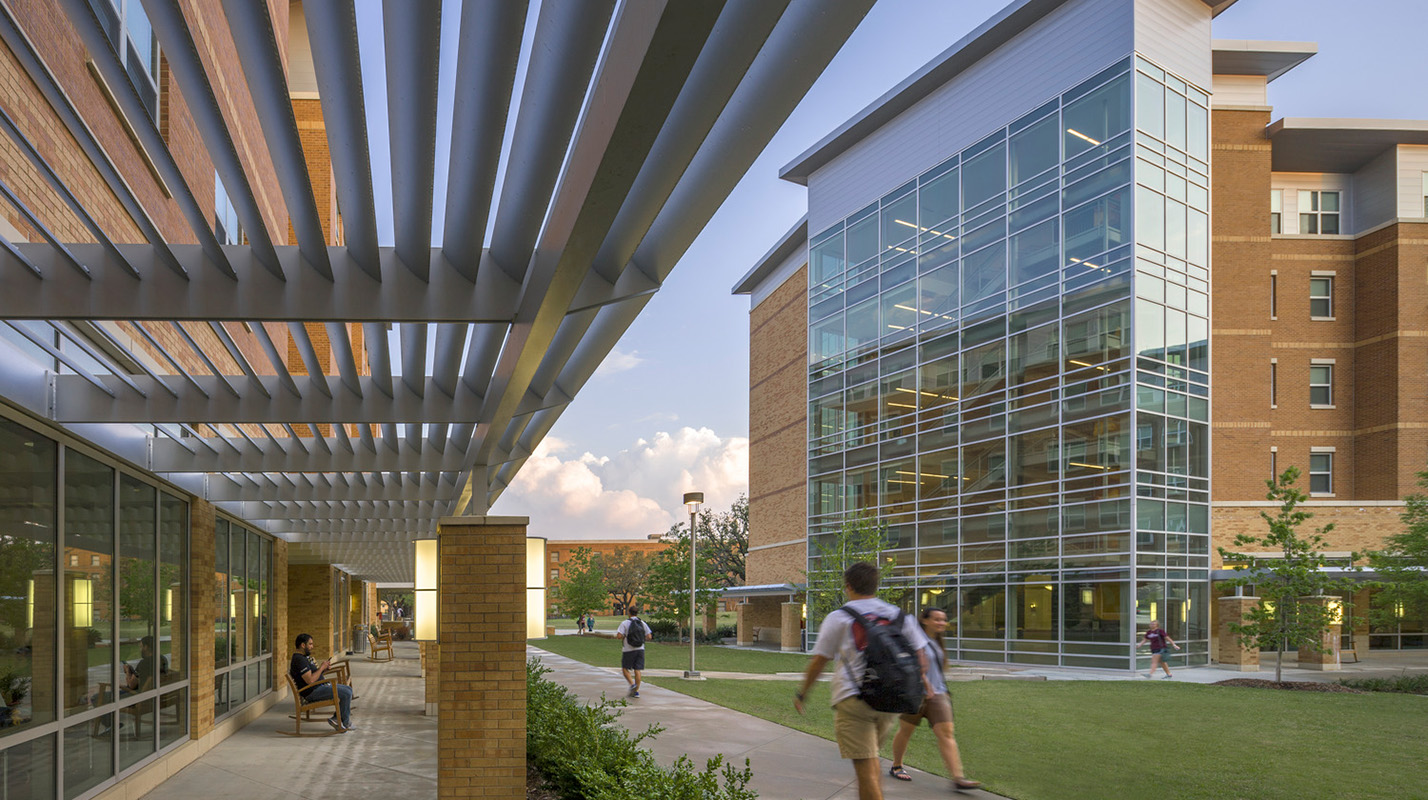
Putting research findings into practice
Having clear data about what works and what can be improved upon has allowed the university to better understand how students use living spaces, what they require, and how to plan and build residences that are efficient to maintain and operate.
“We’re now taking this data to other halls to see what we can do better. We see what we like, what we don’t like, what was successful. It has given us the vocabulary for future projects.”
Daniel Mizer, Jr., Senior Associate Director of Residence Life and Housing, Texas A&M University
These findings been used to improve Hullabaloo as well as the remodeling of four other residence halls based on the study’s recommendations. For example, 16 computers in the CLC were not expected to be widely used because of a 24/7 computer lab on campus and more students having their own devices. However, the convenient location and access to specialized software and printers have drawn students, so another living-learning hall will offer twice the number of computer stations.
The same goes for outlets and bike racks. Programming at the ground floor’s fireplace hearth has seen attendance higher than the capacity of the space. Another surprise was the popularity of the building’s music rooms, which are used continuously, promoting both study and personal well-being, says Daniel.
The hall’s plentiful, functional and modern furnishings, technology and electrical outlets are all in constant use—a lesson that has been carried forward to subsequent facilities. Legacy items, including student-made furnishings, art and an iconic t-shirt quilt that has become a starting point for tours, add warmth and personality, making the space special to students.
“It bespeaks hall involvement, community and leadership opportunities. Attention to these finishing touches has been a lesson that we have carried to the Commons, and now the White Creek Commons.”
Chareny Rydl, Director of Residence Life and Housing, Texas A&M University
While this study focused specifically on how to create an effective residential living-learning environment, the data translates to other student residences as well, and findings on study area utilization can be deployed in educational buildings, student unions, and libraries.
The study has also produced a peer-reviewed student satisfaction survey that can be used to assess the fixed and non-fixed features within the physical building, its social environment, and space utilization. As this research is built upon, it gives campuses and designers the tools to accurately define student requirements and use their resources most effectively by improving the design, management, and operation of student residences going forward.
Authors
Stay on the leading edge
Stay up to date on emerging trends, research, hot topics, and more delivered conveniently to your inbox.
"*" indicates required fields
